

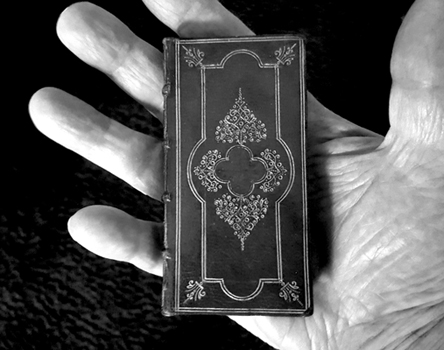
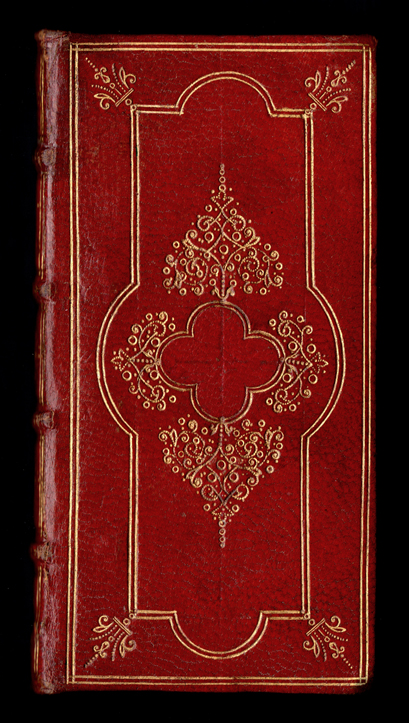
|
In July of 2006 I bought a intricately decorated mid 17th century binding on eBay, this was beginning of my obsession with bookbinding decoration, I wanted to know who actually decorated my eBay item and set out to try to find out, it wasn't very long before I discovered the catalogues of Raphaël Esmerian, and had them shipped to me in my remote location in the middle of the South Pacific Ocean.The internet had arrived late where I was living but I wasted no time in attempting to make my own web site. Esmerian's work was a great inspiration and one of his obsessions was the work of Macé Ruette, Consequently some of my earliest web pages were devoted to a study of everything I could find out about these bindings, starting with Esmerian's initial lead (click here to see this). I have updated these 2006 pages just now, however after looking at Macé Ruette's early tools I am not convinced that Esmerian's example No.4 is actually a Ruette binding... if we concentrate rather on his Habert de Montmor bindings we can follow the tools with confidence. The point I wish to make here however is that the binding that I show at the top of the page is an obvious Mace Ruette binding. Surprisingly I found it on eBay where it was sold without any mention of Mace Ruette. Even though I spent hours studying Ruette's Montmor bindings, it never dawned on me just how small these bindings are. When this one arrived in the mail the actual size was a shock ,which is why I show it at the top of this page in my hand, it is much smaller than the average cell phone, more like a small pocket calculator in size. If you don't keep the size in mind some of the enlarged photos might make you think this is a normal book. |
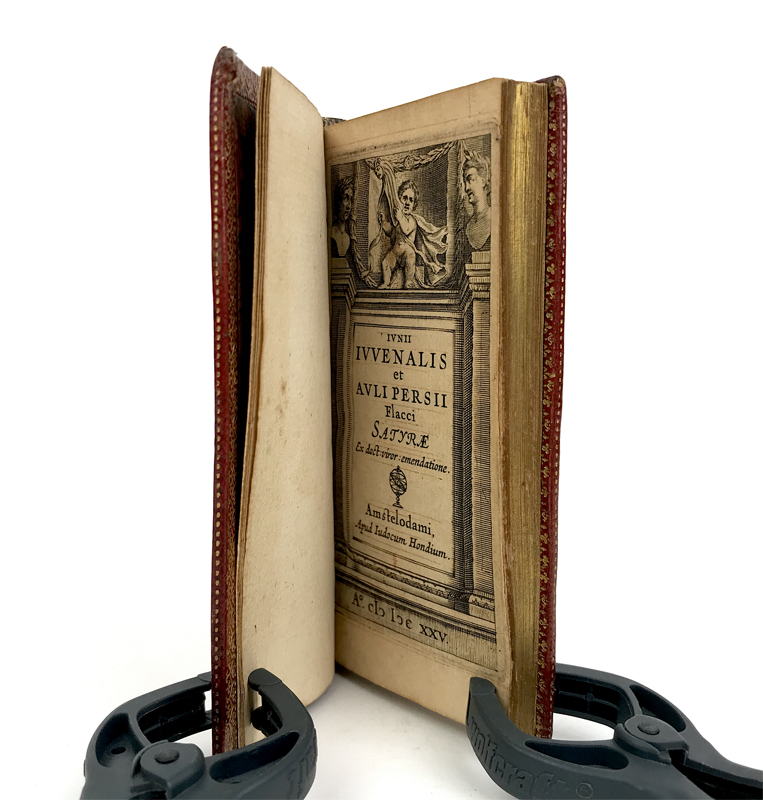
|
In Comparative Diagram 1 we see the title page of this 1625 publication, I am not going to delve into the content of the book lest be spend several pages on just that, suffice to say that this is and was a very popular book of written by Juvenal who was was a Roman poet active in the late first and early second century. AD.
He wrote satirical poetry (Satyrae) that still makes sense today. Juvenal is the source of many well-known maxims, such as : the common people‹rather than caring about their freedom‹are only interested in "bread and circuses" (panem et circenses 10.81; i.e. food and entertainment)
The bottom line is that this is a nearly 400 year old printing of 2000 year old wisdom. Perhaps very rare in this edition, as it is hard to find on the internet, another copy of this specific title page (I didn't find one). Another thing being is that our copy is in like new condition, the leather still soft and shiny, what can we make today that will last 400 hundred years and still look as new as the day it was made? What miracle brand of printer ink will last 40 years let alone 400, The threads and glue still holding as good as they were 400 years ago, does this seem fantastic, unbelievable? and that you can buy it on the internet for the price of a night out on the town... or a trip shopping at the supermarket... what price can we put on this well preserved treasure made by one of the most famous bookbinders in the history of French decorative bookbinding? Personal binder of King, Louis XIII. You cannot go any higher in the climb to be the worlds best bookbinder, you are at the top, crème de la crème. Small wonder that what he made lasts forever. For this rare work of art, meer money is not enough. |
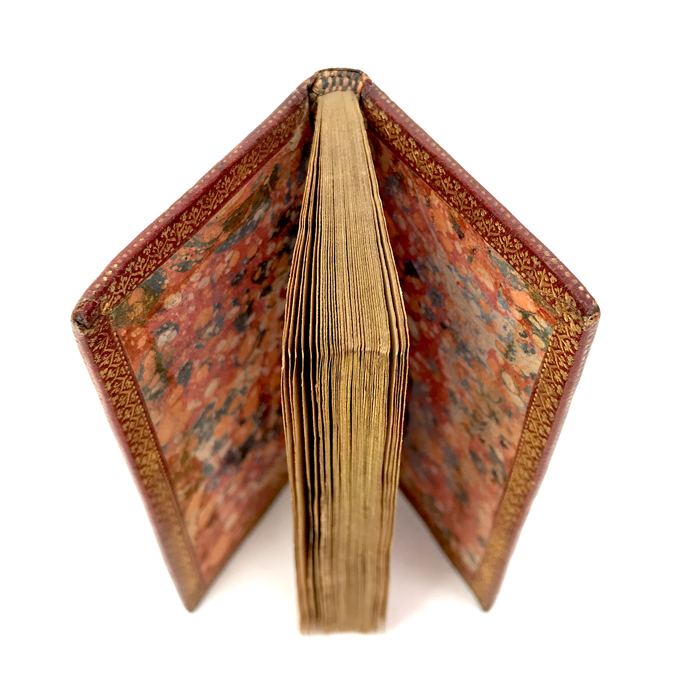
| In Comparative Diagram 2, I show a great photo from the eBay listing for this item, here we see the inner dentelle and decorative endpapers. I searched the internet for marble endpapers by Macé Ruette, Many ancient references proclaim Mace Ruette to be the inventor of marbled endpapers, however opinions on this are mixed. While searching for this I came across a 1987 BnF publication in Gallica that shows these marbled papers as well as outlining the history with examples (click here to see this). I have always thought of marbled paper as the kind that has been created with combs, however is see that the French term papier marbré includes just random drops of paint in mixed colors, that are not necessarily stirred or manipulated with combs or other tools. |
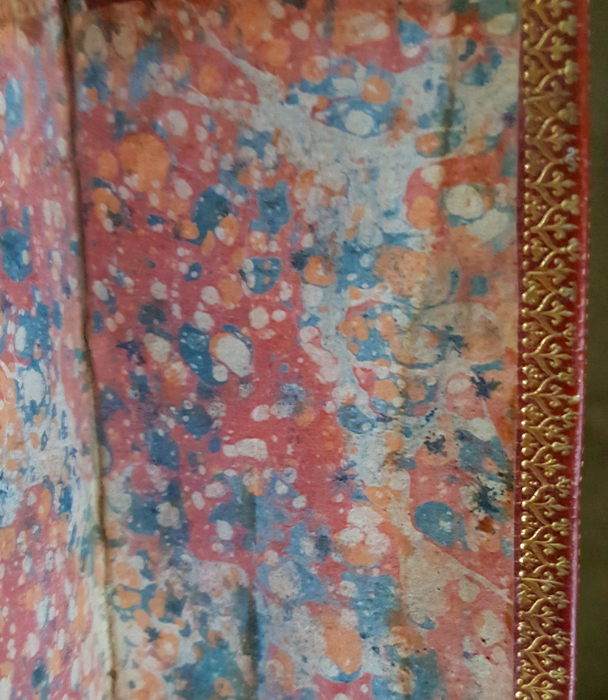
| In Comparative Diagram 3, I show a bit more of this decorative papier marbré. Perhaps it is this that Macé invented? |
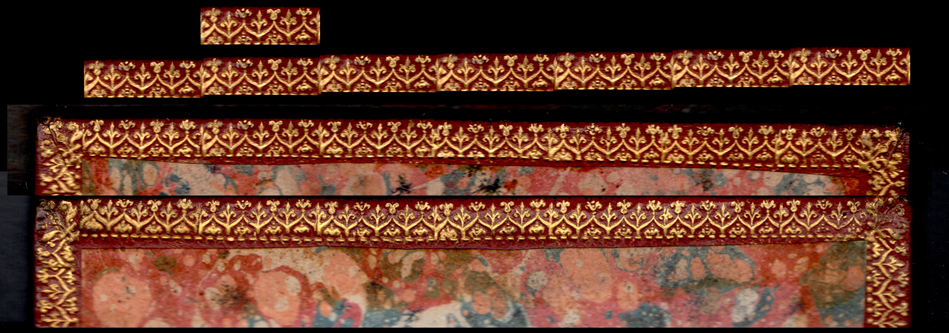
| In Comparative Diagram 4, we discover that the inner dentelle has been created with a palette and not a roulette (shades of PAL 59). I show the front and back inprints then above them I have created a cut and paste version of this palette to make a roulette like strip. You will notice that my pasted palettes come out to a longer strip, this is because I did not overlap as Macé did.You have to wonder about this, why would anyone do things the hard way when you can just buy a roulette that will do the job quick and clean. Anyway his will be a good way to know a real Ruette early binding, if it's a roulette it's not a Ruette. |
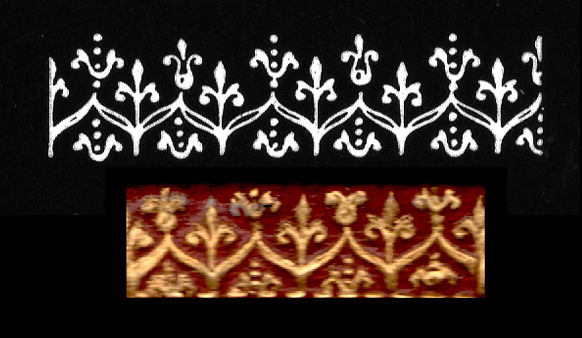
| In Comparative Diagram 5. I compare Raphaël Esmerian's illustration for this palette, it is obvious that he did not notice that this is a palette and not roulette, otherwise he would have illustrated it differently. |
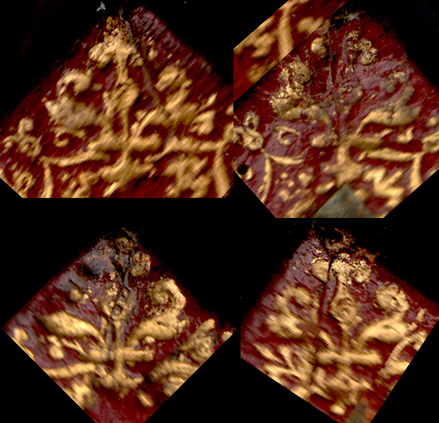
| In Comparative Diagram 6, I have collected the inner dentelle corner imprints, looking at just one does not give you enough information, but comparing them all, we see a tool emerging, and it is not one that I have recorded anywhere else, nor is it in Esmerian's catalogue |

| In Comparative Diagram 7, I have reproduced Esmerian's 1972 graphic of Macé Ruette tools that can be enlarged to 300dpi. |
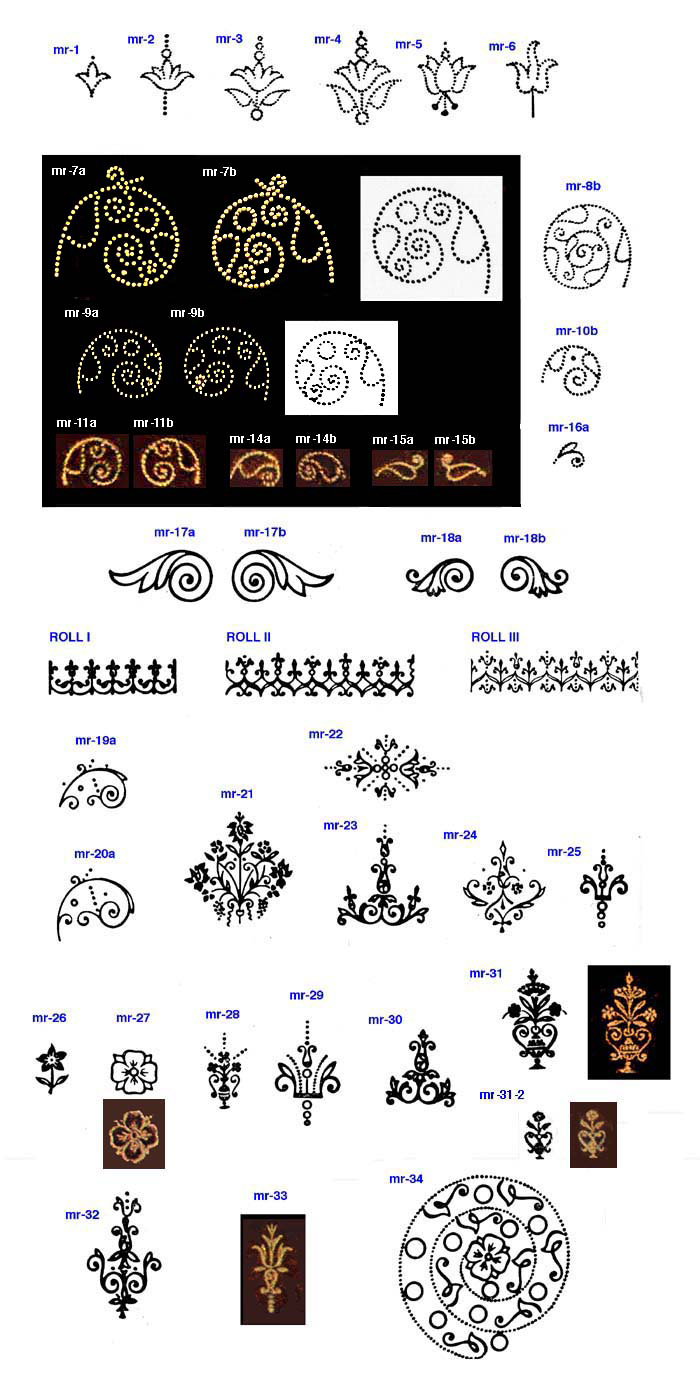
| In Comparative Diagram 8, we see my 2006 solution to the thing that I thought was needed to improve Esmerian's work, a catalogue reference for each tool, I have not really worked on this since, however I came to the conclusion that not all of these tools are found in Ruette's work, we can delve into that later, for now we can tackle the tools that we know to be 100 percent Macé Ruette based on these early bindings that have been outlined by Esmerian and that I show on this page. |
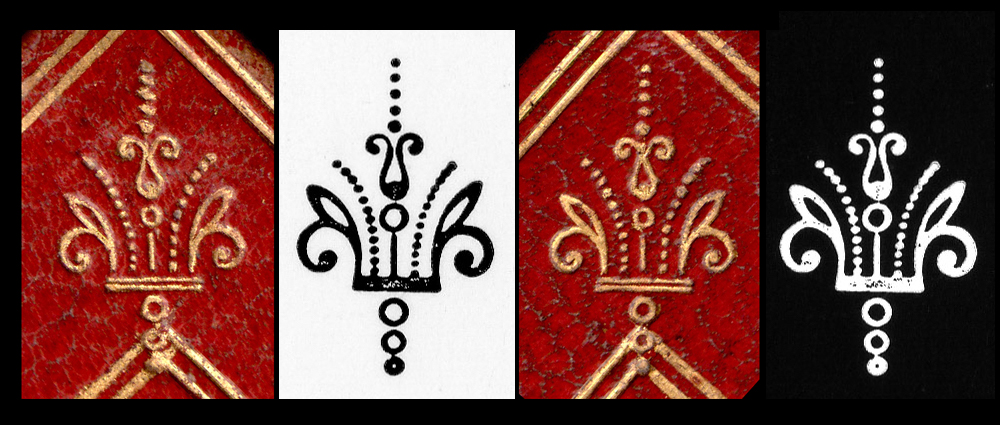
| In Comparative Diagram 9, we see high resolution scans compared with illustrated models. Esmerian's highly important work in the study of 17th century decorative tools can only take us so far. We need absolute precision if we want to really compare and study these decorations made over 4 centuries ago. Over the next few pages we are going to use our high resolution images to make many more interesting discoveries. |
|
click here to see an Inventory Index of Macé and Antoine Ruette bindings click here to return to the HOME page. click here to see an INDEX of the 2017 pages. see below links to previous work |
| Even experts are sometimes wrong, before you spend thousands on a book, please do your own research! Just because I say a certain binding can be attributed to le Maitre isn't any kind of guarantee, don't take my word for it, go a step further and get your own proof. In these pages I have provided you with a way of doing just that. |
| Virtual Bookings, created by L. A. Miller | return to the Home page of VIRTUAL BOOKBINDINGS |